The developmental regulator PKL is required to maintain correct DNA methylation patterns at RNA-directed DNA methylation loci
- PMID: 28569170
- PMCID: PMC5452414
- DOI: 10.1186/s13059-017-1226-y
The developmental regulator PKL is required to maintain correct DNA methylation patterns at RNA-directed DNA methylation loci
Abstract
Background: The chromodomain helicase DNA-binding family of ATP-dependent chromatin remodeling factors play essential roles during eukaryote growth and development. They are recruited by specific transcription factors and regulate the expression of developmentally important genes. Here, we describe an unexpected role in non-coding RNA-directed DNA methylation in Arabidopsis thaliana.
Results: Through forward genetic screens we identified PKL, a gene required for developmental regulation in plants, as a factor promoting transcriptional silencing at the transgenic RD29A promoter. Mutation of PKL results in DNA methylation changes at more than half of the loci that are targeted by RNA-directed DNA methylation (RdDM). A small number of transposable elements and genes had reduced DNA methylation correlated with derepression in the pkl mutant, though for the majority, decreases in DNA methylation are not sufficient to cause release of silencing. The changes in DNA methylation in the pkl mutant are positively correlated with changes in 24-nt siRNA levels. In addition, PKL is required for the accumulation of Pol V-dependent transcripts and for the positioning of Pol V-stabilized nucleosomes at several tested loci, indicating that RNA polymerase V-related functions are impaired in the pkl mutant.
Conclusions: PKL is required for transcriptional silencing and has significant effects on RdDM in plants. The changes in DNA methylation in the pkl mutant are correlated with changes in the non-coding RNAs produced by Pol IV and Pol V. We propose that at RdDM target regions, PKL may be required to create a chromatin environment that influences non-coding RNA production, DNA methylation, and transcriptional silencing.
Keywords: ATP-dependent chromatin remodeling; DNA methylation; Non-coding RNA (ncRNA); RNA-directed DNA methylation (RdDM).
Figures
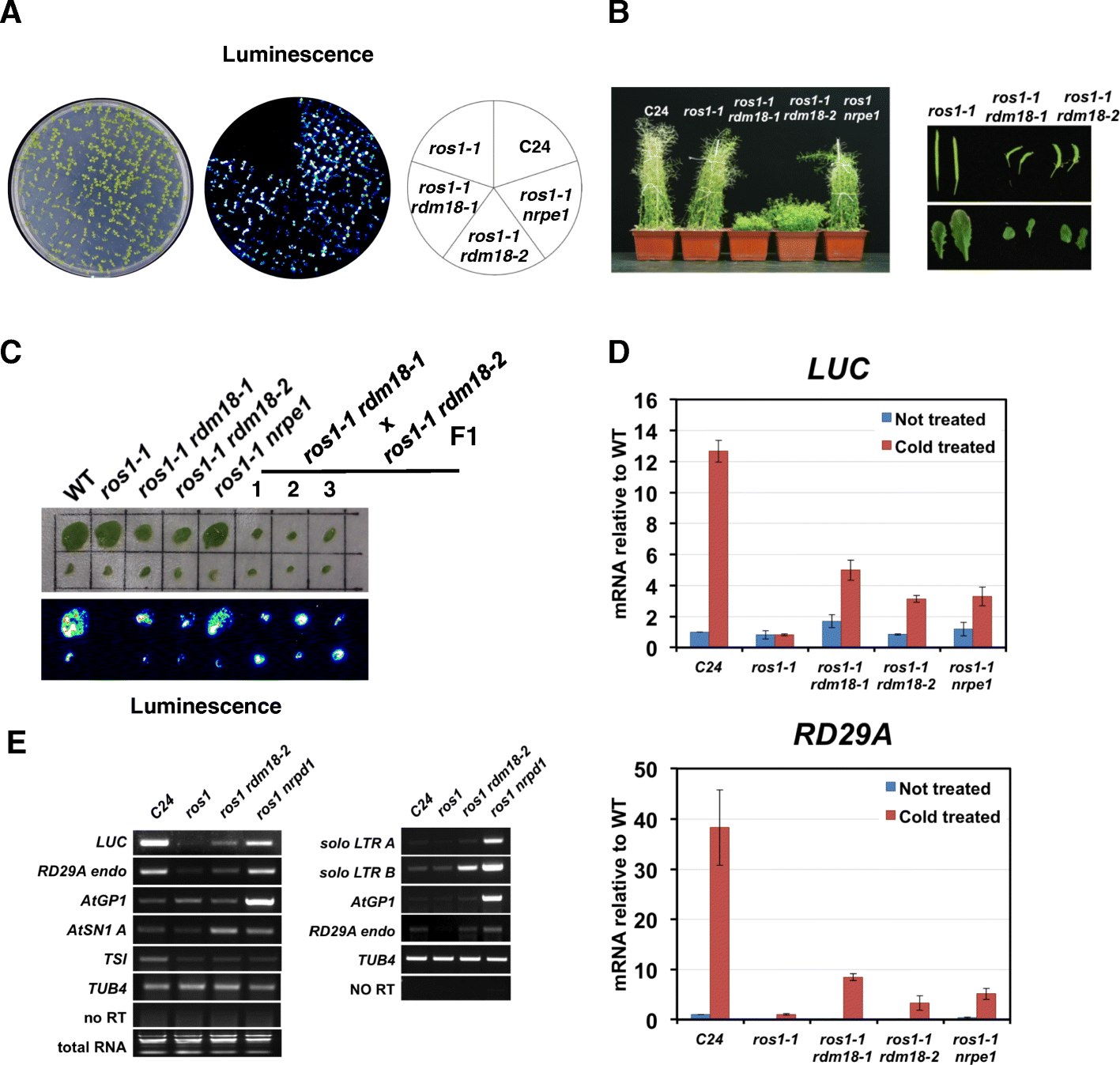
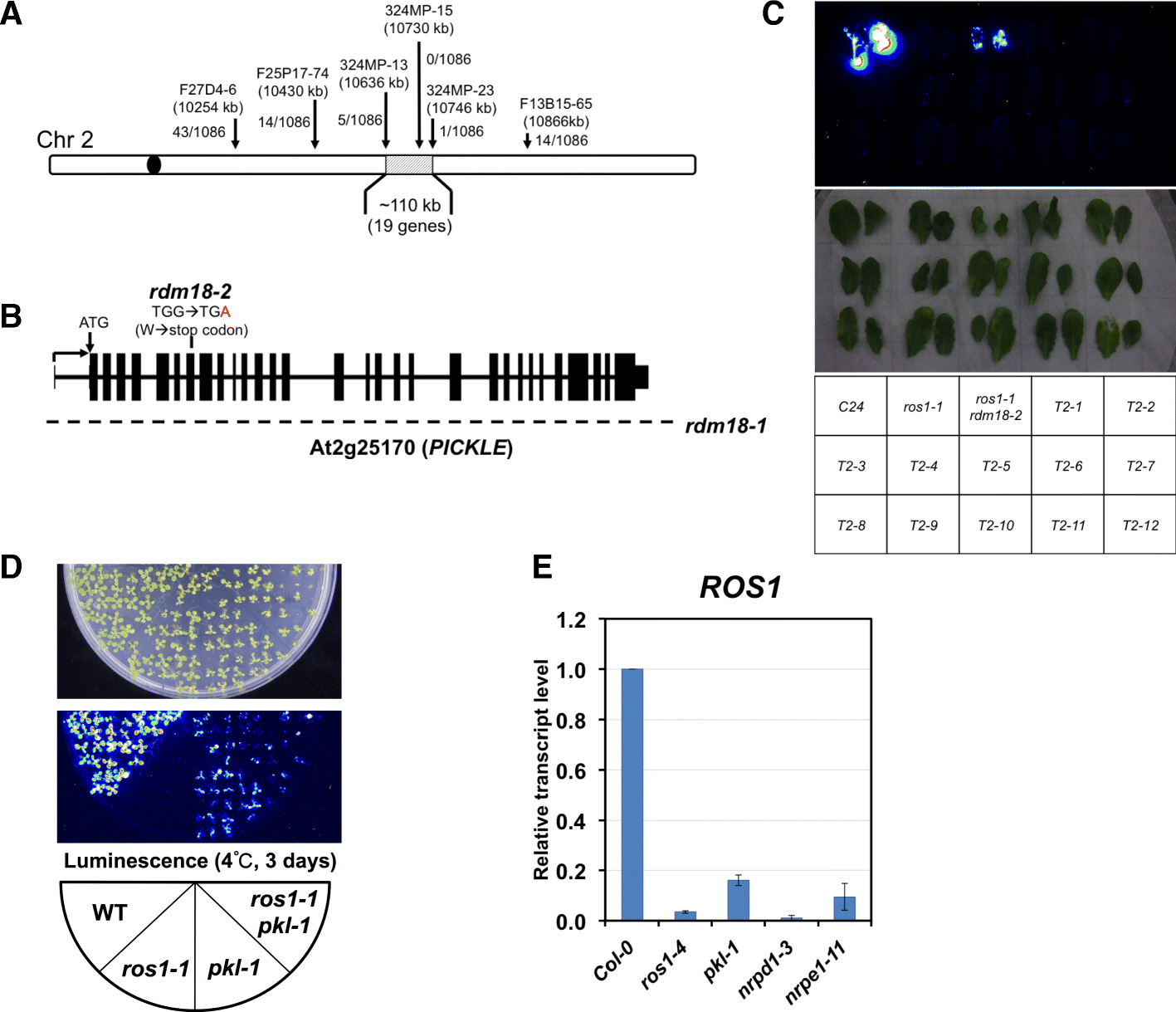
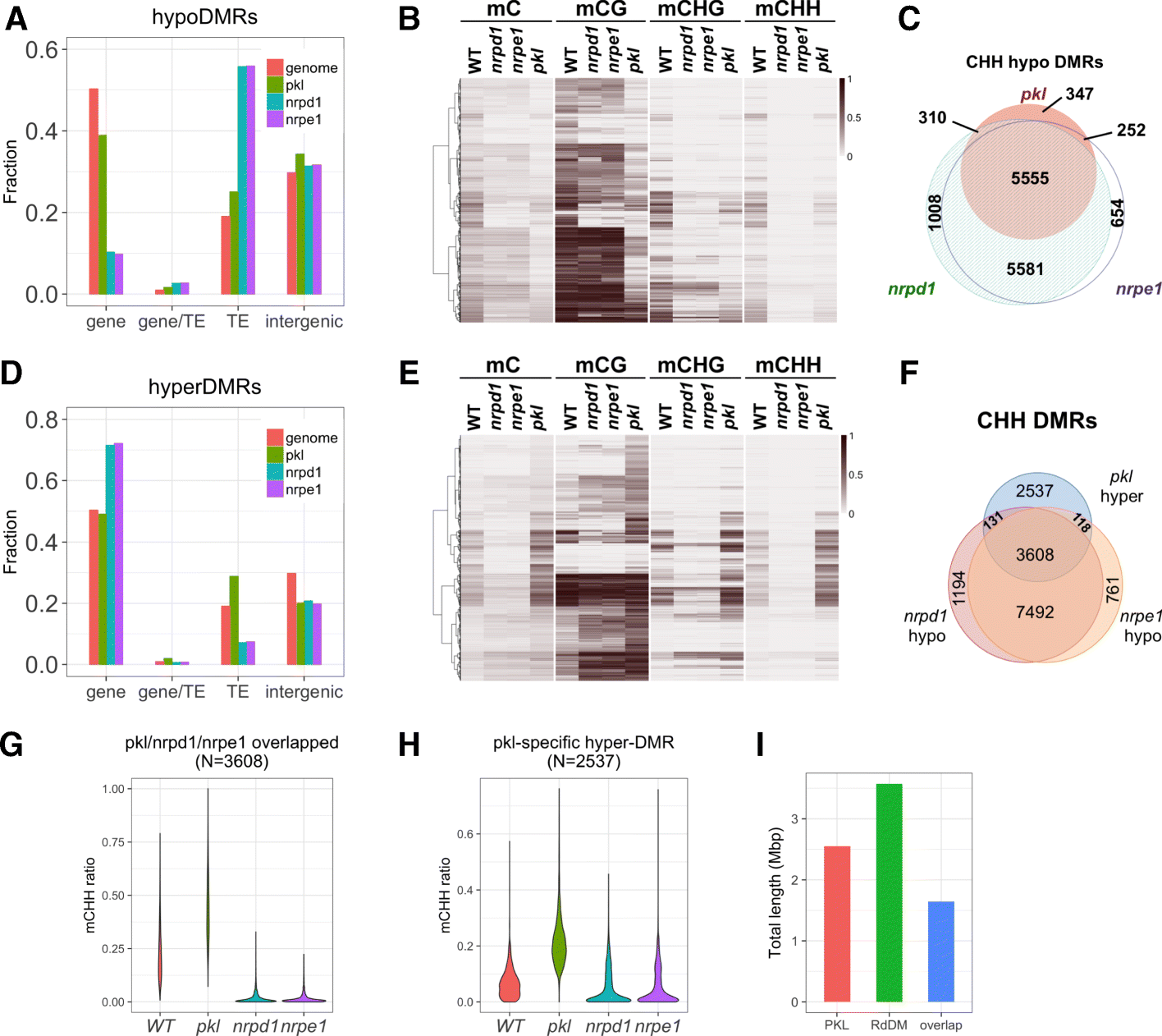

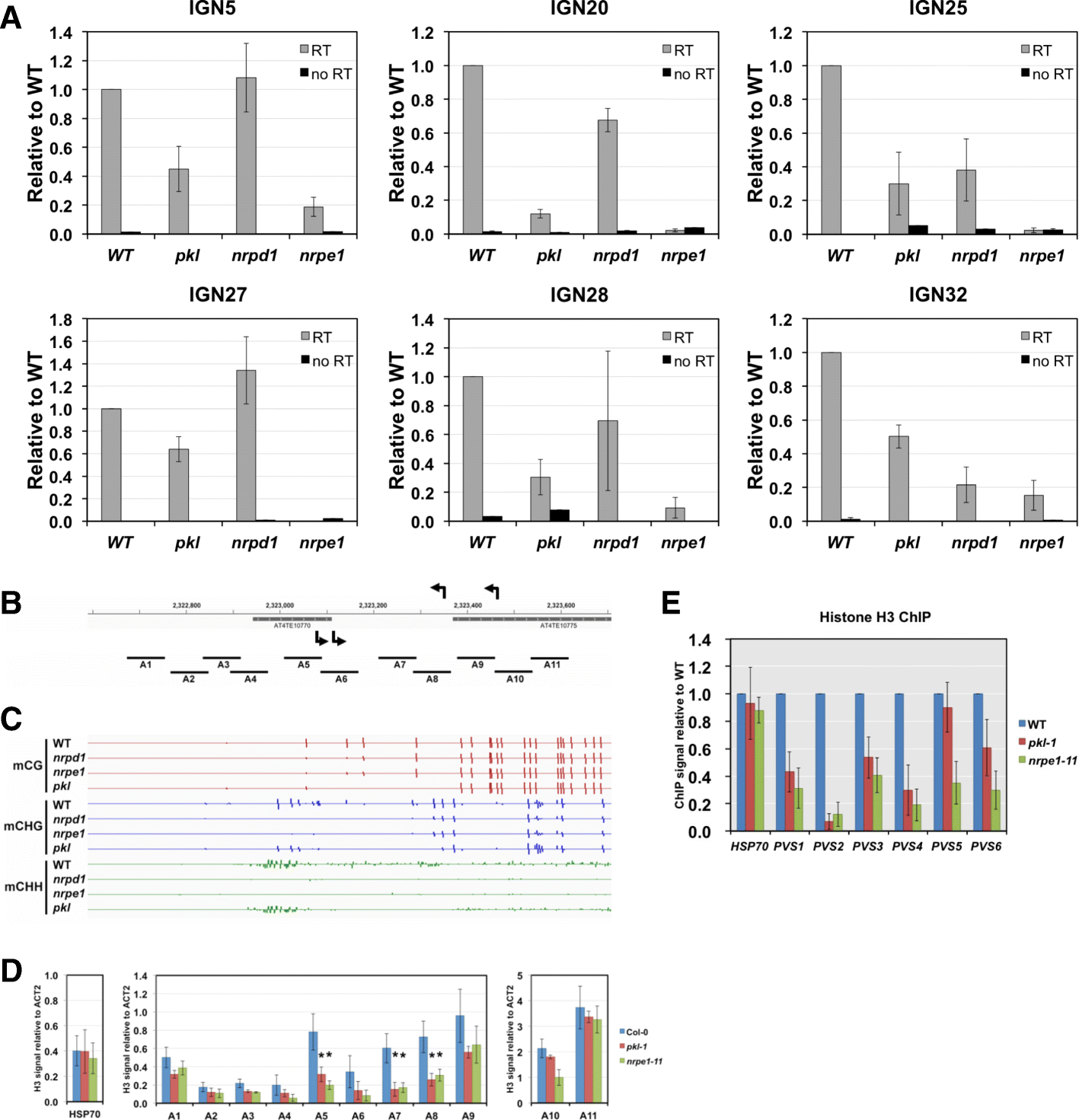
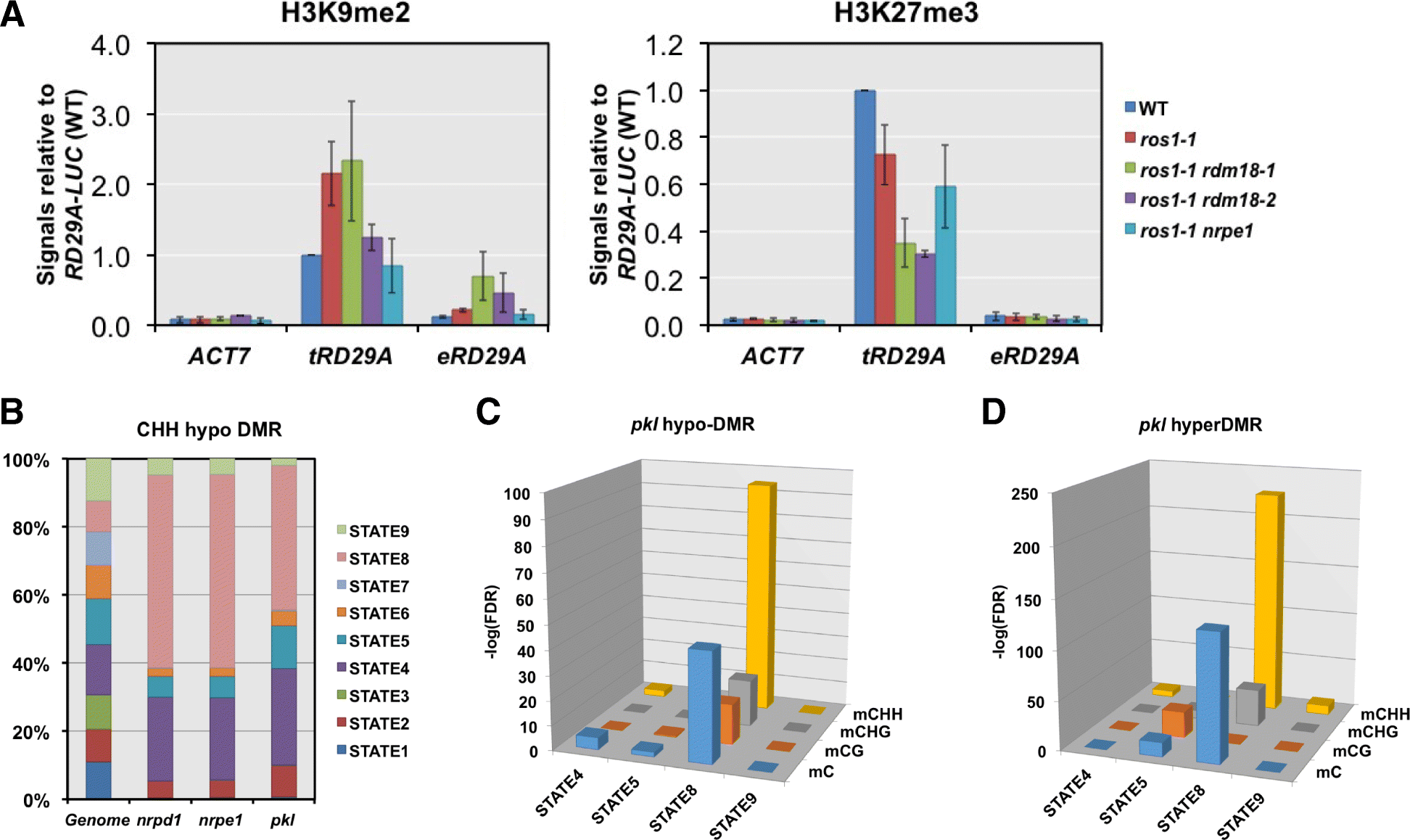
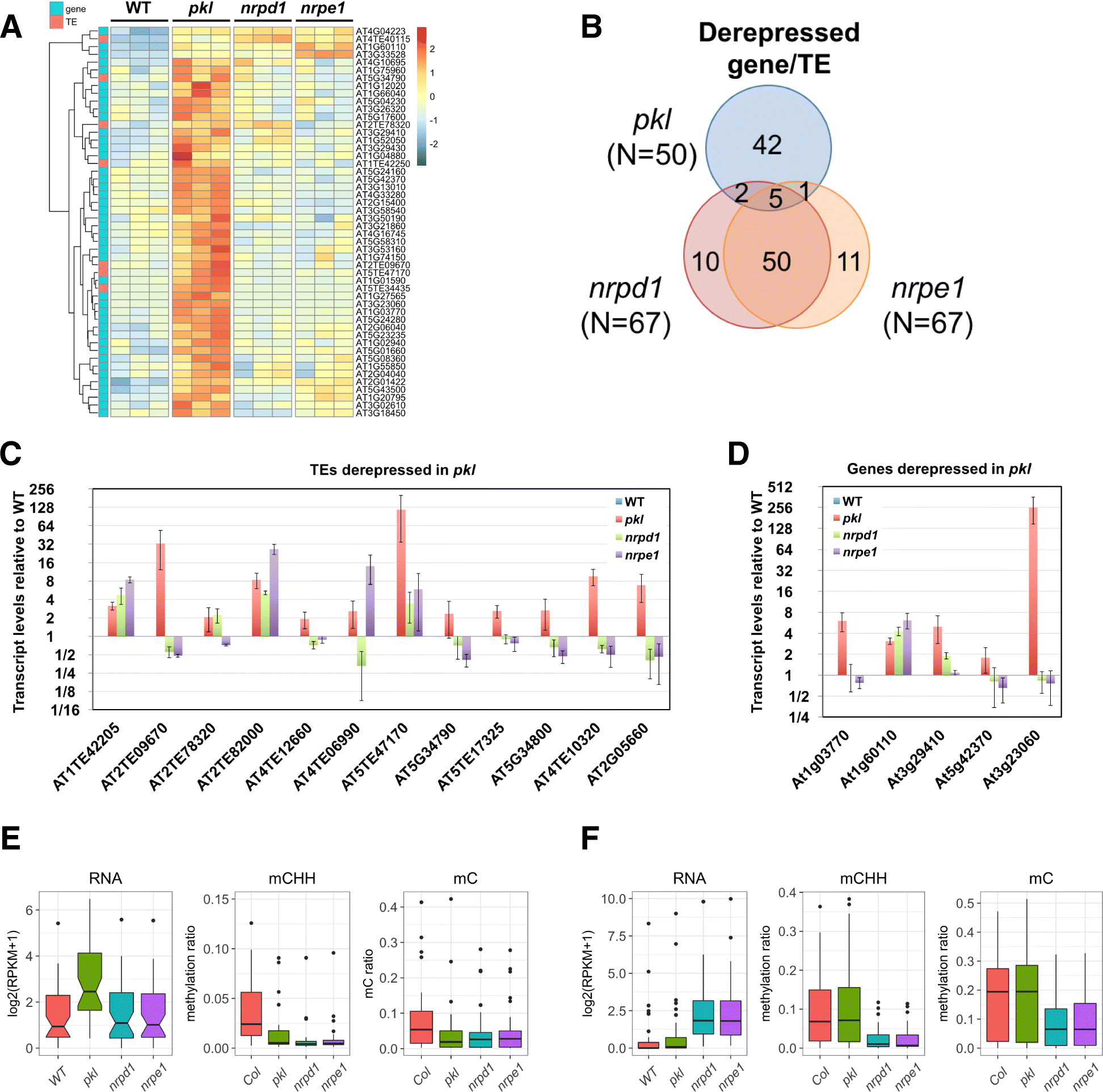
Similar articles
-
Arabidopsis RNA Polymerase V Mediates Enhanced Compaction and Silencing of Geminivirus and Transposon Chromatin during Host Recovery from Infection.J Virol. 2018 Mar 14;92(7):e01320-17. doi: 10.1128/JVI.01320-17. Print 2018 Apr 1. J Virol. 2018. PMID: 29321305 Free PMC article.
-
Non-coding RNA transcription and RNA-directed DNA methylation in Arabidopsis.Mol Plant. 2014 Sep;7(9):1406-1414. doi: 10.1093/mp/ssu075. Epub 2014 Jun 25. Mol Plant. 2014. PMID: 24966349 Review.
-
Interplay among RNA polymerases II, IV and V in RNA-directed DNA methylation at a low copy transgene locus in Arabidopsis thaliana.Plant Mol Biol. 2013 May;82(1-2):85-96. doi: 10.1007/s11103-013-0041-4. Epub 2013 Mar 20. Plant Mol Biol. 2013. PMID: 23512103 Free PMC article.
-
Distinct and concurrent pathways of Pol II- and Pol IV-dependent siRNA biogenesis at a repetitive trans-silencer locus in Arabidopsis thaliana.Plant J. 2014 Jul;79(1):127-38. doi: 10.1111/tpj.12545. Epub 2014 Jun 13. Plant J. 2014. PMID: 24798377
-
The role of long non-coding RNA in transcriptional gene silencing.Curr Opin Plant Biol. 2012 Nov;15(5):517-22. doi: 10.1016/j.pbi.2012.08.008. Epub 2012 Sep 6. Curr Opin Plant Biol. 2012. PMID: 22960034 Review.
Cited by
-
A Role for PICKLE in the Regulation of Cold and Salt Stress Tolerance in Arabidopsis.Front Plant Sci. 2019 Jul 9;10:900. doi: 10.3389/fpls.2019.00900. eCollection 2019. Front Plant Sci. 2019. PMID: 31354770 Free PMC article.
-
A Chloroplast COR413 Protein From Physcomitrella patens Is Required for Growth Regulation Under High Light and ABA Responses.Front Plant Sci. 2020 Jun 19;11:845. doi: 10.3389/fpls.2020.00845. eCollection 2020. Front Plant Sci. 2020. PMID: 32636864 Free PMC article.
-
Abnormal Homocysteine Metabolism: An Insight of Alzheimer's Disease from DNA Methylation.Behav Neurol. 2020 Sep 8;2020:8438602. doi: 10.1155/2020/8438602. eCollection 2020. Behav Neurol. 2020. PMID: 32963633 Free PMC article. Review.
-
Methylome decoding of RdDM-mediated reprogramming effects in the Arabidopsis MSH1 system.Genome Biol. 2022 Aug 4;23(1):167. doi: 10.1186/s13059-022-02731-w. Genome Biol. 2022. PMID: 35927734 Free PMC article.
-
Epigenetic control of abiotic stress signaling in plants.Genes Genomics. 2022 Mar;44(3):267-278. doi: 10.1007/s13258-021-01163-3. Epub 2021 Sep 13. Genes Genomics. 2022. PMID: 34515950 Review.
References
Publication types
MeSH terms
Substances
LinkOut - more resources
Full Text Sources
Other Literature Sources
Molecular Biology Databases
Research Materials

